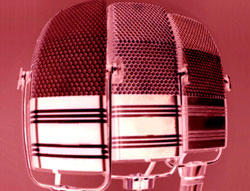The first time I walked into a gig with a couple of ribbon microphones to use on guitars and drum overheads, the house sound guy at the club looked at me like I had three heads, six arms and was painted purple.
This was about 25 years ago, when even the thought of using a condenser mic in a live setting was also considered ridiculous by the majority of the pro audio community.
But you know what? Ribbon mics can work wonders in adding very nice dimension and texture to the presentation of a performance.
Yes, they’re a bit more fragile than many of their dynamic counterparts, so it does require more attention in storing and transporting them.
But their upside is worth the effort. Plus, ribbon microphones are now available which have been tailored for live sound!
I’ve found I can get a “rounder, more expressive” guitar sound in the live house mix by using a ribbon mic.
The texture of the treble character is equally clear – but generally less harsh – which seems to keep it from “fighting” with many of the vocal textures.
Smoothing the texture of the guitars then calms down (a least somewhat) the “4 kHz ice pick in the forehead” quality of too many of the modern handheld condenser mics being used for singers.
This, in turn, allows the entire mix to better “gel,” sounding fuller. (On a really good day, it allows the audience to leave the building without ringing ears and watering eyes.)
Ribbon mics can also work wonders with drum kits. While I generally don’t recommend close mic’ing a kick drum with ribbons – that much wind will definitely pop the ribbon on the first hit – they can help keep the cymbals clear.
Just be sure leave some room in the upper ranges of the treble spectrum for a little extra “air” around the vocals.
You say you’re not working with music all the time?
That’s O.K. – somehow U.S. presidents such as Franklin Roosevelt, Harry Truman and Dwight Eisenhower managed to get their message across just fine with good ol’ ribbon mics in front of them. (This was in the 1940s and 1950s, youngsters.)
My point is that whipping out dynamic mics for public speakers or singers, and slapping up condenser mics for drum overheads really isn’t the only way to go about the task.
Yes, we’ve all seen it done this way for years and years, but live reinforcement system technology has improved to the point where subtlety in tonal texture and nuance that can be clearly heard lends itself to more expressive tools.
Maybe it’s time to start some new traditions; maybe it’s time to create a bit of a greater range of textures that can provide artists with a better starting point to transmit the emotion and intensity of their performances; and maybe it’s time to take advantage of the greater clarity and superior coverage of new technologies to employ some different tools.
It’s just a thought – I guess the older I get, the more bored I get with hearing the same problems stacked upon the same problems, even though a myriad of practical solutions are now ready and waiting.
Fletcher is a long-time recording and live audio professional who moderates a popular REP Forum on ProSoundWeb.




















